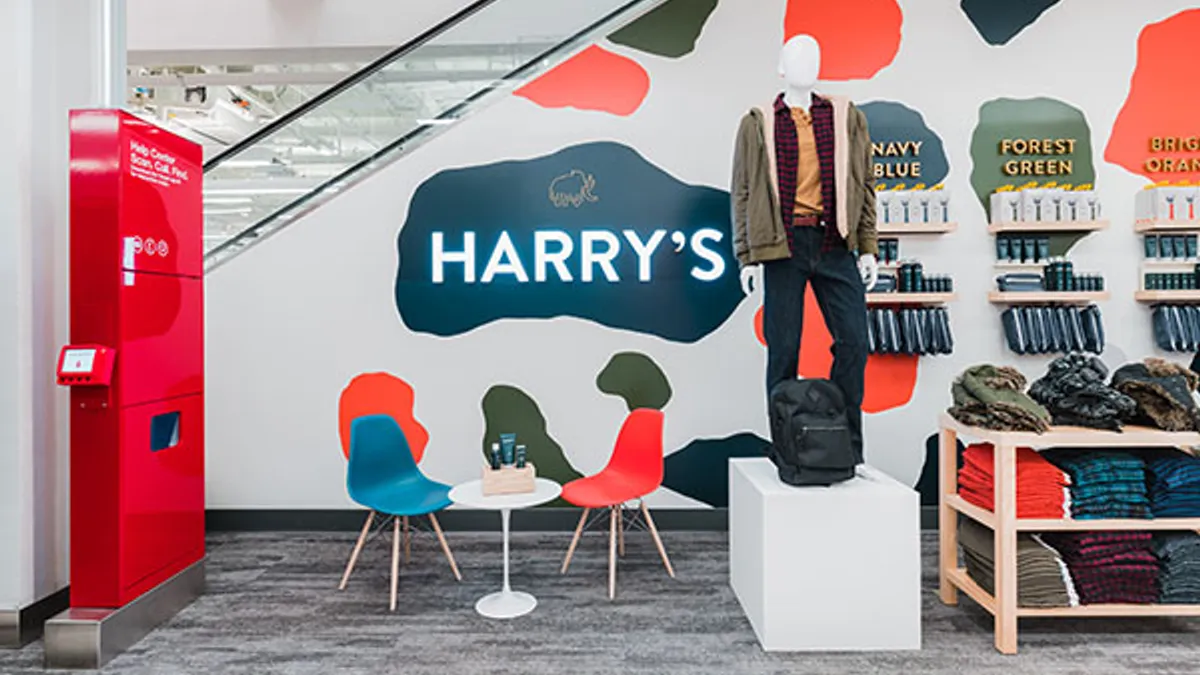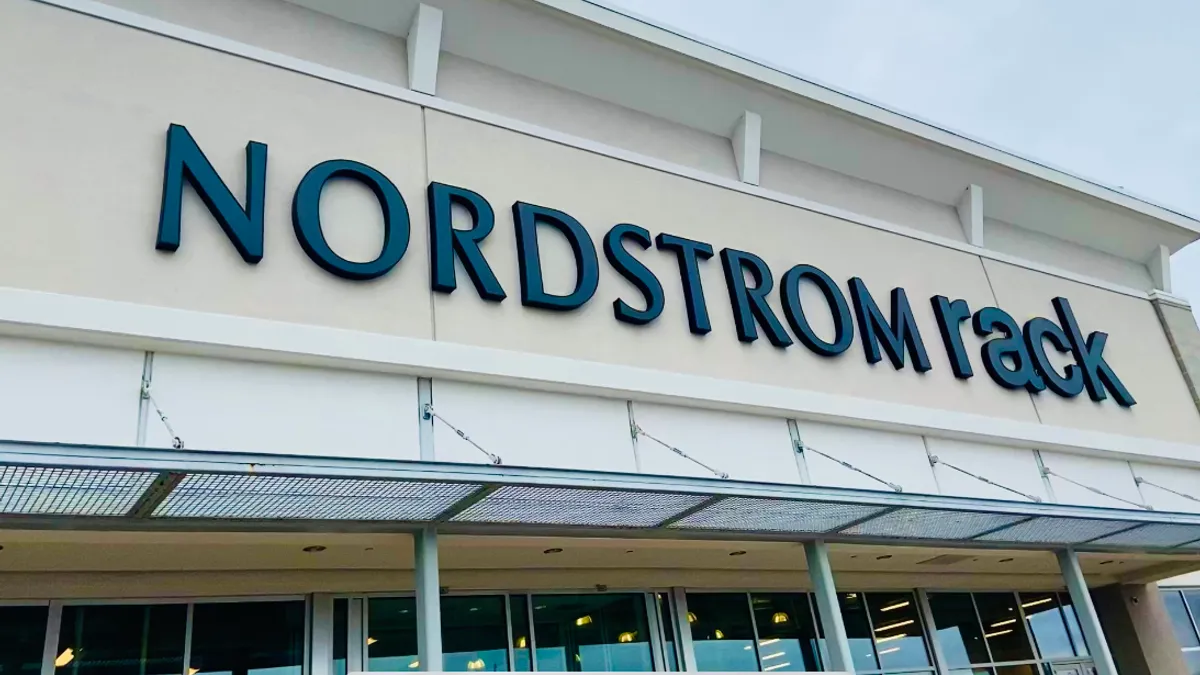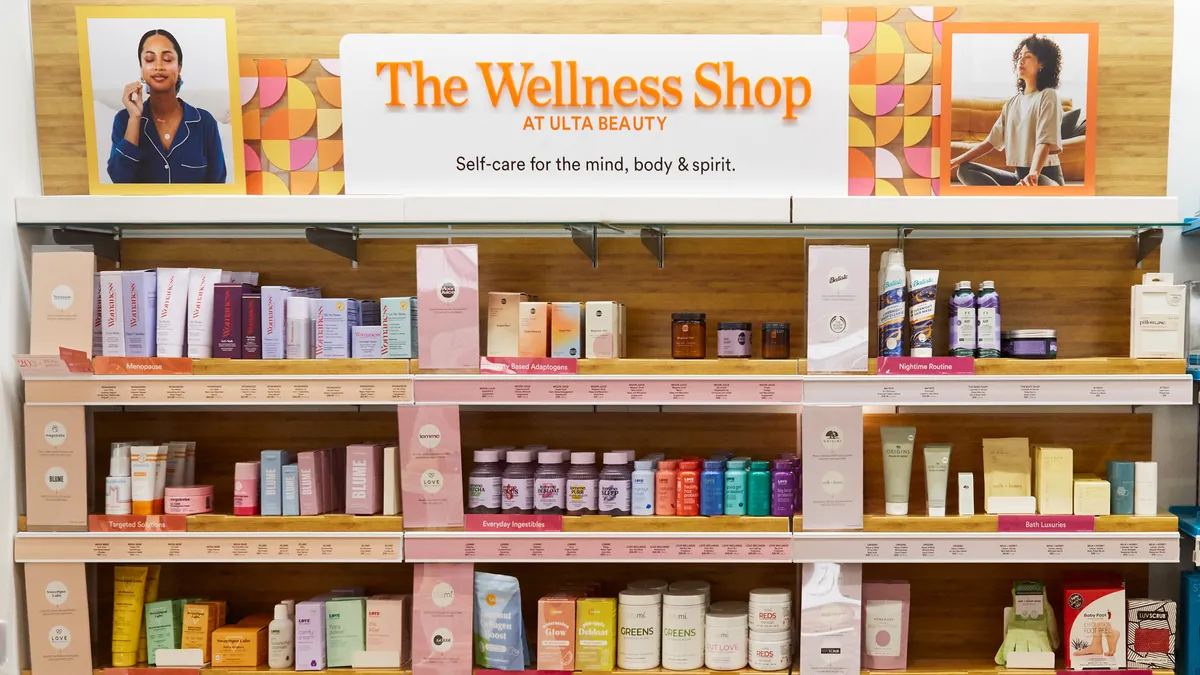Scattered among the CPG mainstays at a Walmart or Target are a crop of direct-to-consumer brands.
While built on the notion of cutting out the middleman and selling directly to customers through online channels, DTC brands have increasingly found value in selling goods offline due to high marketing spend online, which can inhibit profitability prospects.
Several more mature brands have opened permanent shops in key markets. Others have opted for temporary pop-up stores or turned to traditional retailers to forge partnerships to house their products in a physical setting.
"Customer acquisition costs continue to increase," Lauren Bitar, head of retail consulting at RetailNext, said by email. "Having immediate access to the base of a retailer like Walmart [and] being able to have a store presence without having to lease your own stores could be pretty appetizing as the DTC space continues to become more crowded. That is why a lot of brands went to these retailers historically. Right now if you have an Instagram page you can have a brand — there's a lot of clutter to cut through."
Digital brands have plenty to gain from having their products sit on the shelf in a Walmart or Target. But how does a big-box retailer benefit from such partnerships?
An influx of DTC brands in big-box stores
Retailer-brand partnerships are far from new, and mass merchants have brought DTCs into their stores not long after the brands' founding.
Target, for example, struck a deal with razor brand Harry's in 2016 to sell its products in stores. The mass merchant has gone all-in on its DTC strategy, striking deals over the years with other brands like Function of Beauty, Lively, Native and Quip.
More recently, specialty players, particularly in the home space, have been forging partnerships with DTC brands selling in adjacent categories. West Elm early last year teamed up with online plant brand Bloomscape, and Crate and Barrel announced two partnerships earlier this month with bedding brand Parachute and cookware brand Caraway. And Casper, which operates many of its stores, has formed partnerships with more than 20 retailers, including Nordstrom, Target, Costco and Sam's Club.
Walmart, which has also inked its fair share of partnerships with digitally native brands, in more recent years began buying brands outright — a move Moody's Vice President and Senior Credit Officer Charlie O'Shea likened to "renting a great apartment and the opportunity comes to buy it at a reasonable price."
You're going to grab it," he said about the opportunity to acquire brands. "With owning comes more control and the ability to move it in directions that maybe a partnership doesn't provide … Sometimes it's more effective to buy it than build it, and you get a quicker bang for your buck. You pay more, but you're going to minimize the potential for failure."
The mass merchant bought Jet in 2016 for a record $3 billion. Walmart at the time used its Jet.com marketplace to sell hip brands like Nike and Bonobos — the latter of which was scooped up by the mass merchant in 2017 for $310 million.
"With owning comes more control and the ability to move it in directions that maybe a partnership doesn't provide."

Charlie O'Shea
Vice President and Senior Credit Officer at Moody's
Through its various acquisitions over the years — which have also included Eloquii, Bare Necessities and ModCloth — Walmart has gained tremendous digital knowledge and talent, namely through the acqui-hires of Marc Lore and Andy Dunn.
"Much of that initial focus of Jet and some of the other acquisitions was really about talent," Hilding Anderson, head of retail strategy, North America at Publicis Sapient, said in an interview with Retail Dive. "Walmart didn't have enough digital-savvy talent and didn't know how to run a digital operation at the level that it aspired to."
In recent years, however, Walmart sold some of the brands it acquired, including Bare Necessities, Shoes.com and ModCloth, possibly indicating that the retailer was more interested in the digital capabilities and knowledge offered by these companies than the specific brands themselves.
While bringing in a hip, new brand, in theory, seems like a good way to stand out from the competition, if the acquired brand doesn't fit in with the retailer's overall mission, it creates a potential problem by alienating existing customers.
The challenge is "when your acquisition doesn't mesh with your brand reputation. If brands are perceived as 'too cool for Walmart,' both the DTC brand and Walmart could get hurt," Bitar said. "Just buying brands with great equity won't be a silver bullet for solving pre-existing online selling woes. In addition, as customer acquisition costs continue to increase, the more you spend on marketing to prop up a new brand [or] category, the less you have to spend on other brands [or] categories. They might have found themselves spread too thin."
Walmart has begun to reposition its entire digital strategy by integrating Jet into its larger e-commerce business and seeing off both Lore and Dunn.
"They've learned from every experience," O'Shea said about Walmart's decision to pivot strategies. "They're going to test. They're going to throw stuff at the wall and whatever sticks they'll hang on to, and whatever doesn't, they've got the ability to move fast and minimize whatever negative impact there could be."
What can DTCs offer the biggest retail players?
While traditional retailers' e-commerce operations have become vastly more advanced in the last several years, direct-to-consumer brands can still offer their digital expertise to a certain extent. "The retailer still needs to figure out how to make shopping for those brands and the experience of shopping the rest of their site (e.g. shopping for pants vs. plungers) feel seamless," Bitar said.
But more importantly, forming partnerships with newer, more sought-after brands allows retailers to attract and build a relationship with a new set of consumers that may have not necessarily shopped with them otherwise.
"It's a win for [traditional retailers] as well because they get a younger audience," Hilding said.
For the retailers, it helps generate more foot traffic to stores, provide incremental revenue and help maintain cultural relevance among consumers.
Right now, consumers are "scouring their social networks for the next great product. And more often than not, these are the smaller digital retail companies that we call the DTC companies," Hilding said. But he predicts that once the coronavirus pandemic subsides, consumers will be eager to venture out of their homes and into physical stores, creating immense value for these brands to be housed within a traditional retailer's space.
Forming partnerships with digitally native brands can also help retailers when it comes to their private labels. Target, for example, has adopted the DTC aesthetic through several of its private labels, including its Open Story luggage line launched last year, which features products reminiscent of Away's suitcases. Its activewear brand All in Motion, which features products using the fun, bright color palette many younger brands have used, has grown to generate $1 billion in its first year. And Walmart, over the past several years, has launched more private labels itself, including a clean, affordable skincare line and an apparel label.
"We have seen them really go after their own private label fashion of late," Bitar said. "They might have used those acquisitions as an opportunity to learn more about how these brands handle design processes, trend forecasting, their manufacturing and sourcing relationships etc. and then decided to turn around and do it themselves."





















